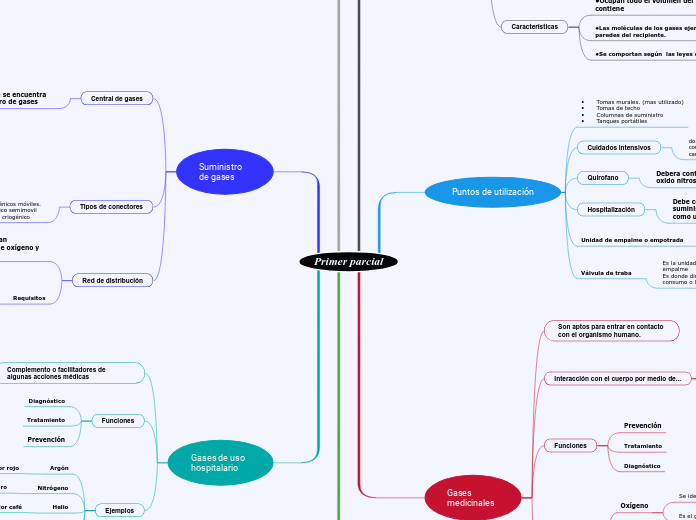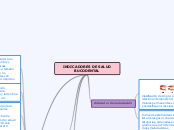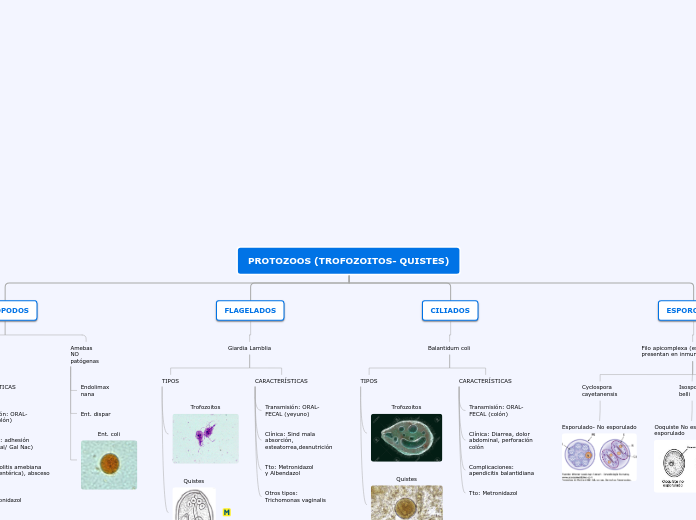Primer parcial
The Solar System is the gravitationally bound system of the Sun and the objects that orbit it, either directly or indirectly. Of the objects that orbit the Sun directly, the largest are the eight planets, with the remainder being smaller objects, the dwarf planets, and small Solar System bodies.
Compresor de aire medicinal
Saturn is known most for its rings.
Galileo Galilei first thought it was an object with three parts: a planet and two large moons on either side.
Not knowing he was seeing a planet with rings, the stumped astronomer entered a small drawing — a symbol with one large circle and two smaller ones — in his notebook.
The rings are made of ice and rock and scientists are not yet sure how they formed. The gaseous planet is mostly hydrogen and helium.
Características requeridas
Saturn has over 150 moons and satellites. However, of these vast numbers of moons, only 62 are known and confirmed as moons.
Name at least 5 of these moons.
Seco
Baja cantidad de partículas
Compresor libre de aceite
•El aire medicinal puede ser suministrado por varios medios como cilindros, los contenedores y compresores de aire medicinal
How long does it take for Saturn to go around the sun?
Gases de uso hospitalario
Uranus is an oddball. It has clouds made of hydrogen sulfide, the same chemical that makes rotten eggs smell so foul.
It rotates from east to west like Venus. Its tilt causes extreme seasons that last 20-plus years, and the sun beats down on one pole or the other for 84 Earth-years at a time.
Methane in the atmosphere gives Uranus its blue-green tint. It also has 13 sets of faint rings.
How long does it take for Uranus to go around the sun?
Se representa con el color amarillo
Se representa con el color gris
Helio
Se representa con el color café
Nitrógeno
Se representa con el color negro
Argón
Se representa con el color rojo
A planet's day is the time it takes the planet to rotate or spin once on its axis.
Write down Uranus's day measured in Earth days.
Complemento o facilitadores de algunas acciones médicas
Suministro de gases
Neptune is about the size of Uranus and is known for supersonic strong winds.
Neptune is far out and cold.
The planet is more than 30 times as far from the sun as Earth.
Neptune was the first planet predicted to exist by using math, before it was visually detected. Neptune is about 17 times as massive as Earth and has a rocky core.
Red de distribución
A planet's day is the time it takes the planet to rotate or spin once on its axis.
Write down Neptune's day measured in Earth days.
Requisitos
1.Instalarse al exterior del establecimiento
2. Alejada de fuente de calor y energía
3. Accesibilidad para carga y descarga
4. Techada, ventilada y con piso de cemento
5. Rampa de materiales no inflamables
6. Contar con señalamientos
7. Área de acceso restringido
8. Contar con un Manifold para cada suministro de gas
Todos los establecimientos que manejan instalaciones fijas para el suministro de oxígeno y óxido nitroso
Tipos de conectores
How long does it take for Neptune to go around the sun?
• Cilindros
• Contenedores criogénicos móviles.
• Contenedor criogénico semimovil
• Tanque estacionario criogénico
Central de gases
Área donde se encuentra el suministro de gases
Manifold
Se constituye por...
4. Control
Dispositivo que mide y regula la presión
3. Válvula de recepción
De una o varios cabezales y tiene una salida a tuberia de distribución
2. Cabezal
Tuberia con adictamientos específicos a la que se conecta la bancada
1. Bancada
Integrado por uno o varios cilindros que operan al mismo tiempo
Permite el suministro de gas a presión constante
Se divide en dos áreas
Baja presión
Alta presión
Bombas de vacio
It was once considered a planet but in August 2006 the International Astronomical Union (IAU) downgraded the status of Pluto to that of “dwarf planet.”
Pluto is unlike other planets in many respects. It is smaller than Earth's moon; its orbit is highly elliptical.
It's a cold, rocky world with a tenuous atmosphere. Pluto is a very active ice world that's covered in glaciers, mountains of ice water, icy dunes, and possibly even cryovolcanoes that erupt icy lava made of water, methane or ammonia.
The dwarf planet Pluto has five moons.
Name these moons.
•Construcción de gran robustez para garantizar larga vida útil y eficiencia operativa
•Alta velocidad de bombeo
•Operación lo más silenciosa posible
•Mínimos requerimientos de mantenimiento
•Ausencia de contaminación
Se amplia en ...
A planet's day is the time it takes the planet to rotate or spin once on its axis.
Write down Pluto's day measured in Earth days.
• Clínicas
• Hospitales
• Laboratorios,
• También tiene usos veterinarios
Gases medicinales
Mars is a cold, desert-like place covered in dust. This dust is made of iron oxides, giving the planet its iconic red hue.
Mars shares similarities with Earth: It is rocky, has mountains, valleys and canyons, and storm systems ranging from localized tornado-like dust devils to planet-engulfing dust storms.
Ejemplos
Mars has two small moons.
Name these moons.
Óxido nitroso
Produce un efecto sedante (anestesia) en concentraciones de 20 a 40%
Se identifica con el color azul marino
Subtopic
Dióxido de carbono
Estimula la respiración en concentraciones de 1 a 6%
Se identifica con el color gris.
Aire medicinal
Es una mezcla sintética de oxígeno y nitrógeno puros
Se identifica con el color amarillo
Oxígeno
Es el gas más importante para los seres vivos
Se identifica con el color verde.
Funciones
How long does it take for Mars to go around the sun?
Diagnóstico
Tratamiento
Prevención
Interacción con el cuerpo por medio de...
A planet's day is the time it takes the planet to rotate or spin once on its axis.
Write down Mars's day measured in Earth days.
Patológicos
Metabólicos
Inmunilógicos
Son aptos para entrar en contacto con el organismo humano.
Puntos de utilización
Earth is a water world, with two-thirds of the planet covered by oceans.
It's the only world known to harbor life.
Earth's atmosphere is rich in nitrogen and oxygen.
Its name originates from 'Die Erde,' the German word for 'the ground.'
Earth may once have had two moons, nowadays it has just one.
Válvula de traba
Es la unidad que se encuentra instalada sobre la unidad de empalme
Es donde directamente se conecta los accesorios para consumo o los equipos médicos.
Unidad de empalme o empotrada
Esta válvula se encuentra instalada dentro del muro, techo o columna de suministro de manera oculta.
Hospitalización
How long does it take for Earth to go around the sun?
Debe contar con una toma fija por cama para suministro de oxigeno, fija de aire comprimido, como una toma fija de aspiraciones controlada.
Quirofano
A planet's day is the time it takes the planet to rotate or spin once on its axis.
Write down the Earth's day in hours.
Debera contar con instalaciones fijas de oxigeno, oxido nitroso y aire.
Cuidados intensivos
dos tomas fijas para oxígenos medicinal, una toma fija de aire comprimido, dos tomas fijas de aspiración controlada y canastilla con frasco empotrado en la pared
• Tomas murales. (mas utilizado)
• Tomas de techo
• Columnas de suministro
• Tanques portátiles
Gases
Mercury is the smallest, only a little bit larger than Earth's moon. Mercury has no moon.
It experiences dramatic changes in its day and night temperatures: Day temperatures can reach a scorching 840 F (450 C), which is hot enough to melt lead. Meanwhile, on the night side, temperatures drop to minus 290 F (minus 180 C).
It also has a very thin atmosphere of oxygen, sodium, hydrogen, helium, and potassium and can't break-up incoming meteors, so its surface is pockmarked with craters, just like the moon.
Características
How long does it take for Mercury to go around the sun?
•Se comportan según las leyes de...
•Las moléculas de los gases ejercen presión sobre las paredes del recipiente.
•Ocupan todo el volumen del recipiente que los contiene
Clasificación
Our Solar System has eight “official” planets which orbit the Sun.
Each planet is at a different distance from the sun. Name its position.
Inertes
No permiten el desarrollo de la vida
Irritantes
Atacan químicamente, dañando tejidos y mucosas
Tóxicos
Si la dosis supera el valor estándar, actúan como veneno
Comburentes
Favorece la inflamación o mantienen los incendios
Combustibles
Forman mezclas con aire y otro comburente capaces de arder









